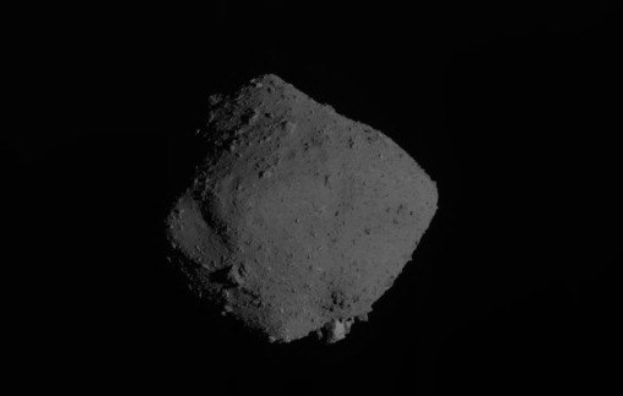The Hayabusa-2 sent confirmation of the inclusion of its engines to Earth. This means that the station began returning to Earth after 1.5 years of research on the asteroid Ryugu. It is expected that the station will deliver the capsule with soil samples to Earth orbit in late 2020, the mission tweeted.
「さよならリュウグウ」
Goodbye RyuguAfter the applause, Project Manager Tsuda murmured a goodbye that sounded both affectionate and a touch lonely.
— HAYABUSA2@JAXA (@haya2e_jaxa) November 13, 2019
The Hayabusa-2 automatic interplanetary station was launched into space using the H-IIA launch vehicle on December 3, 2014. The device overcame a total of 3.2 billion kilometres and on June 27, 2018, entered into orbit around the near-Earth 500-meter asteroid (162173) Ryugu. After a year and a half of research, the station was able to obtain samples of asteroid’s substance both from its surface and from the inner layers. The probe landed two small MINERVA-II-1 probes, and the MINERVA-II2 module, as well as the large MASCOT ( Mobile Asteroid Surface Scout ), which received valuable scientific evidence. The station itself managed to map the asteroid and fully investigate it.
On the morning of November 13, 2019, the Hayabusa-2, at a distance of 20.11 kilometres from the Ryugu surface, turned on the engines as part of a manoeuvre of descent from orbit and return to Earth. After 15 minutes, confirmation of the success of the manoeuvre came to the Earth, the current state of the spacecraft is normal, it is gradually moving away from the asteroid at a speed of 9.2 centimetres per second. Five days later, the station will leave the sphere of Hill of the asteroid, until that moment it will regularly receive images of Ryugu.
The station is expected to deliver a capsule of soil samples to Earth orbit by the end of 2020. The capsule will land at the Woomera Test Site in central South Australia after entering the atmosphere. Now the Japan Aerospace Exploration Agency is engaged in obtaining permission to conduct a search operation, placing an antenna complex in the landing zone and exporting the capsule to Japan, where it will be opened.
